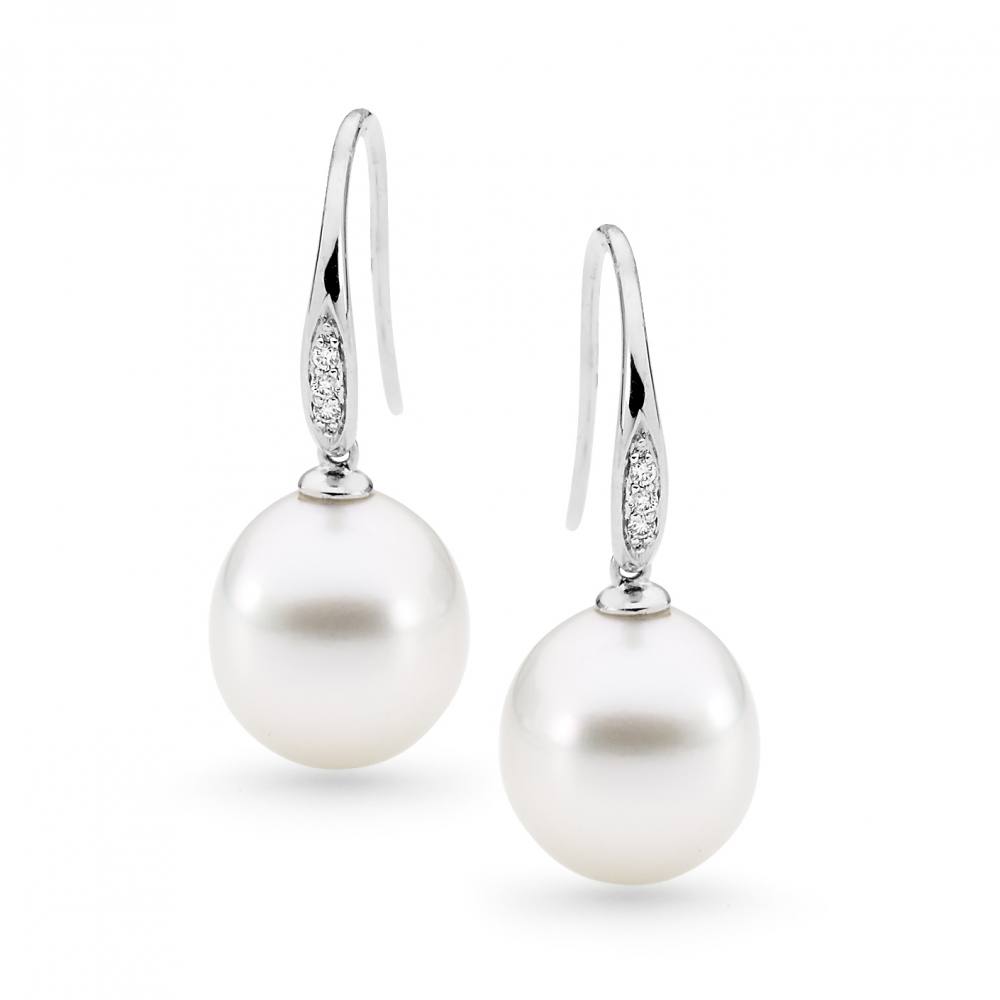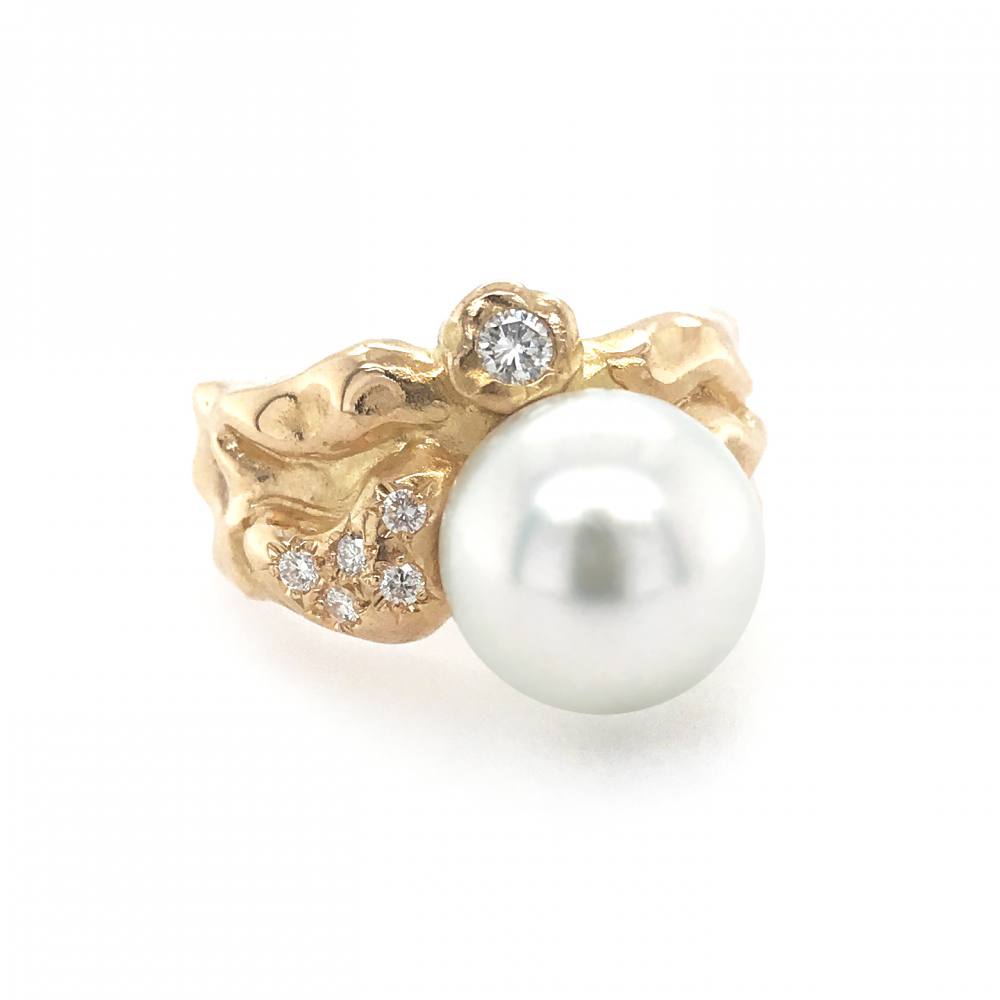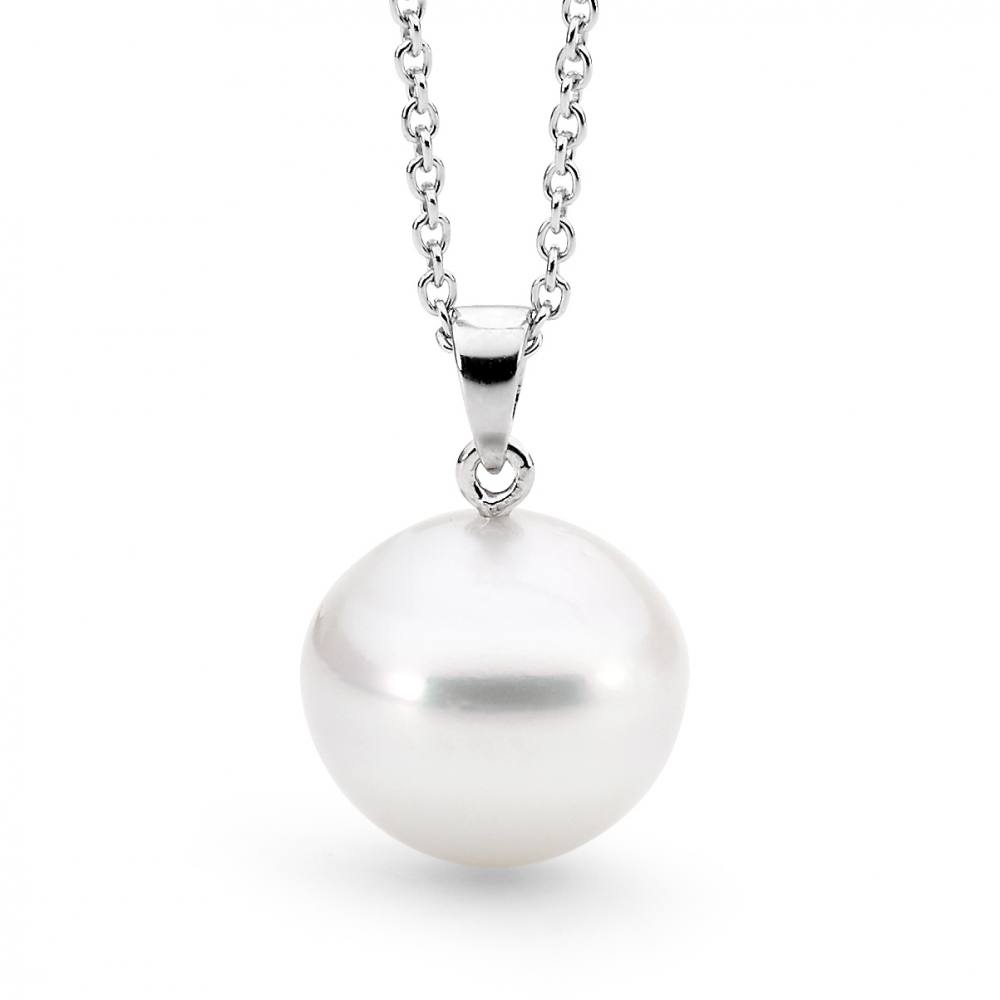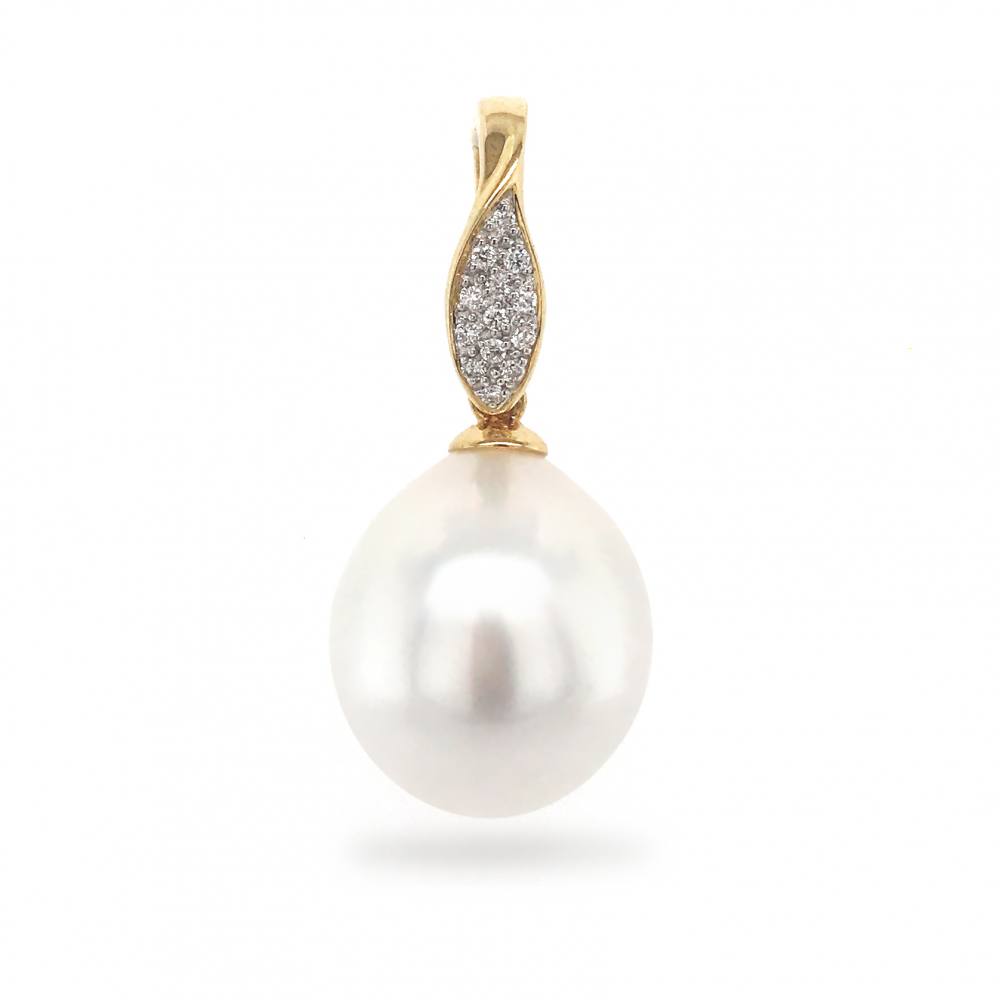Australian Pearls
Origin of South Sea Pearls
Australia and Australian pearls have been a central part of the worldwide pearl business since the 1800’s.
Broome on the far north-west of Australia’s coastline has been the dominant sea port where pearling is based largely due to the wealth of oysters on the floor of the ocean at eighty mile beach.
By the early 1900’s there were hundreds of pearl luggers with full crews fishing for the Pinctada Maxima shells and there was a huge trade in the shell itself which was used for Mother of Pearl Buttons, and the inlay of cutlery, picture frames, pistols, hair brushes, and in jewellery as well.
Natural pearls were highly prized and worth a fortune too. Pierre and Louis Cartier, the highly esteemed jewellers from Paris, France, famously swapped two natural pearl necklaces and one hundred US dollars for their flagship store in Manhattan in the corner of 52nd street and Fifth Avenue with Mr Morton F Plant, a good deal for both parties and there is a marvellous portrait of Mrs Mae Caldwell Manwaring Plant by wearing the natural pearls.
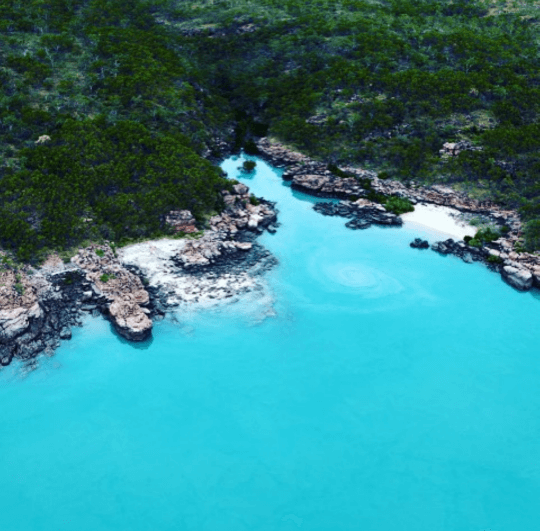
Australian South Sea Pearls
There is a wealth of pearl bearing shells around the Australian coastline including Pinctada Maxima oysters in the Northern Territory and Western Australia and Far North Queensland and these are the farmed south sea pearl producing oysters.
There are also Abalone shells that produce green-ish blue baroque pearls, Akoya oysters in Port Stephens, New South Wales, Mabe pearls can be produced from Penguin oysters in Western Australia.
The vast majority of Australian pearl business is in what have become termed generically as Australia South Sea Cultured pearls. These range in size from 9 to 25 millimetres and the average size is 12.5 millimetres. They come in a variety of shapes; perfect round pearls for rings, earrings and necklaces. Semi round shapes for pearl necklaces, pendants and pearl earrings. Drop shapes like tear drops are rare but nature gives us these shapes as well as oval shapes, all perfect for pendants and earrings and sometimes in strands as well. Button pearls come in high and low shapes almost like a flying saucer and are perfect for rings and earrings sitting flush against the ring band and flat against the ear lobes for a snug fit not protruding too much. Baroque and semi drop baroque shapes are more free form and ideal for pendants, necklaces and earrings. Circled pearls come in round, drop, oval and button shapes with concentric circle lines around the pearl.
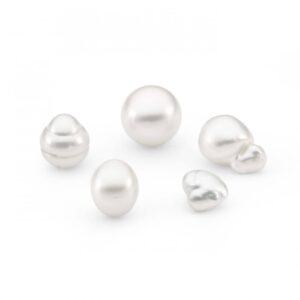
Cultivation of Australian Pearls
Australian south sea cultured pearls were first cultivated in the late 1950’s and David Norman’s father Boris Norman purchased the very first commercial harvest of pearls out of Australia in 1959. David’s grandfather Michel Norman set up the Australian Pearl Company in 1937 in London having previously sold natural pearls from his Paris office and lived in France’s capital, a huge centre for fine gems and jewellery.
The pearling process is a very labour intensive process, and begins with the careful harvesting of the Pinctada maxima oyster, from the remote shores of Australia’s north-west coast, divers handpick each wild oyster. The selected wild oysters are then returned to a ‘nursery’, where the seeding process starts. A strictly limited number of oysters may be harvested at any one time, ensuring long-term sustainability of the species.
Seeding involves technicians delicately placing a “seed” in each oyster, this “seed” is a polished sphere of Mississippi clamshell to stimulate the creation of the natural pearl process. Once seeded, the oyster is returned to the deep and left to thrive over a 2-3 year period. Over this time, the oysters absorb the nutrients of the pristine waters, shaping each pearl to be as unique and beautiful as possible. The success of the Australian Pearls is due to the remote and pristine waters that the oysters are farmed. The clean water and environment ensures that the health of the oysters is always at an optimum level.
After the 2-3 year is over, the oysters are removed from the water and technicians delicately open the shell to reveal the pearl, however it is unknown until the oyster is opened what the oyster has created. Oysters that produce a high quality pearls are seeded again for another harvest.
Australian pearls have been crafted into jewellery that has adorned several of the best known members of the world’s Royal families and pearls have been synonymous with style and elegance and Grace for centuries.
Truly a globally recognised gem, Australian pearls are available in fine jewellery stores all around the world.
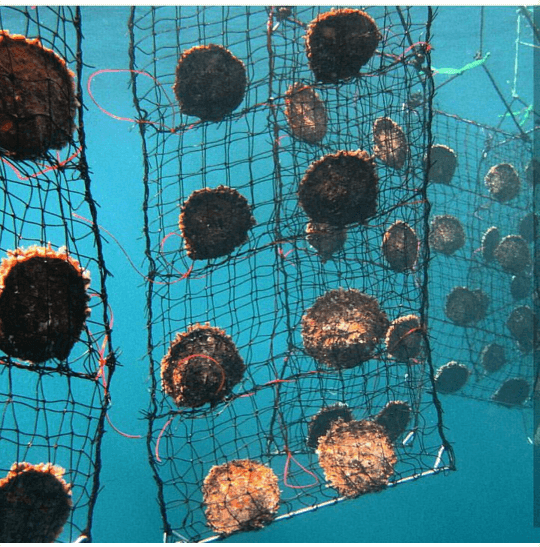
FAQs
Australian pearls also know as Australian cultured pearls or Australian south sea cultured pearls are cultivated, which involves seeding a host oyster with an irritant, most commonly a round shell bead placed in the gonad area of the host oyster by an experienced grafter, or technician. The oyster surrounds the bead in a pearl sac and starts to cover the bead with concentric layers of aragonite crystals known as nacre and this is the essence of a pearl. This process takes two years and at harvest time the oyster will yield an Australian pearl worth anywhere from one hundred dollars to several thousands of dollars depending on the quality of the Australian pearl.
The Australian pearl producing oyster is named Pinctada Maxima and is native to Far North Queensland, North Western Australia and The Northern Territory. The largest concentration of wild oysters is found off eighty mile beach around one hundred kilometres from the town of Broome in Western Australia. Christened the Port of Pearls, Broome boasts the largest collection of pearl themed retail Australian pearl stores in one town and the largest number of pearling companies managed from this town of about twenty thousand inhabitants.
Around 1900, Broome was the centre of the Mother of Pearl shell trade and the natural pearl trade. Australian pearl shells were used for buttons and inlay in picture frames, cutlery, religious books and religious artefacts, pistol holders and jewellery. Fortunes were made overnight should divers recover natural pearls. The Cartier brothers, Jacques and Pierre famously swapped two natural pearl necklaces in the mid 1910’s with Morton Plant, a railroad owner whose wife Maisie Plant adored the necklaces, in exchange for a town house which to this day is the Cartier New York flagship store on Fifth Avenue at 52nd Street.
David Norman’s Grandfather, Michel Norman incorporated The Australian Pearl Company in 1934 in London, having previously operated in Paris . This company specialised in the trading of Australian natural pearls.
Boris Norman of The Australian Pearl Company based in London, David Norman’s father, purchased the first available Australian pearl harvest in 1959 in partnership with Pierre Morand of Geneva . The Paspaley family of Darwin , Australia, had cultivated Australian Pearls in the Northern Territory before 1959 and remain to this day the pre eminent pearl farmers by quantity , quality and value in the whole world.
A wild or natural pearl is produced entirely by Nature whereby the host oyster is irritated by a small creature or object that gets lodged inside its body and to isolate this foreign entity covers it with aragonite crystals which is the nacreous substance we call pearl. Natural pearls were all the rage in Elizabethan Europe of the 1500’s and were essential kit for an Indian Maharajah as well ! Marie Antoinette’s pearl sold for auction in Austria in 2018 for Australian $42’000’000, illustrating the great value of Natural pearls .
Cultured pearls on the other hand are made by man helping Nature by inserting a small round bead into the body of the oyster to start off the culturing process whereby just like in the formation of Natural or wild pearls, the oyster deposits layers of aragonite crystals in rings like in onion skins which is a modern cultured pearl . Australia pearl farmers have been cultivating Australian cultured pearls since the late 1950’s and today the total Australian cultured pearl production is valued at around 30 per cent of total world pearl production.
Culturing time is best at two years. Oysters are collected by divers on the bottom of the ocean floor and then placed in panels of six which are suspended about two metres underwater hanging off a long rope called a longline . Oysters are usually seeded with round shaped beaded nuclei made out of the pig toe clam from the Mississippi river. Best time to operate on the oysters is June through August, and after two years pearls are harvested and graded for sale, and oysters are re seeded to hopefully yield bigger size pearls two years later.
Modern Cultured pearling was invented around 1890 and commercialised successfully in the 1020’s by Kokichi Mikimoto in Japan. Up until then all pearls were natural and Australian pearls were amongst the most sought after, and Broome was the bustling centre of Australian Pearl business.
It takes two years to cultivate an Australian pearl . Any longer risks the pearl growing severely out of shape or being covered in calcified chalky looking material.
Once harvested and graded into size, shape, colour, lustre and cleanliness of skins, Australian pearls are sorted into matching pairs for earrings, matching strands of pearls for wearing as necklaces , a process that can take up to five harvests to be sorted through over the years to finish as perfectly a possible the matching of the pearl strands.
Pearls suitable for jewellery such as drops and oval shaped pearls for earrings and enhancers and pendants are selected .
Button shaped pearls make excellent earrings and rings that show the pearl sitting flatter on the finger .
Perfect rounds make excellent earrings and rings and pendants and necklaces as do the more off or semi round shapes .
The more free form Baroque pearls make excellent strands and individual necklaces and sometimes earrings and enhancers and even pearl rings .
Circled Australia pearls, those rounds, drops, ovals, buttons, semi baroques with concentric circular lines all the way around them, make a variety of jewellery, most commonly , pendants, earrings and strands.
The modern Australian cultured pearl business commenced in the 1950’s and really came into its own in the later 1980’s. The Norman family has been at the start, and centre of the business, and David Norman worked with the Kailis and Paspaley pearling families for 20 years developing world markets for both families.
Today we bring you wondrous Australian pearls, in a variety of styles and prices and ranges, available online at Aquarianpearls.com.au and instore at Aquarian Pearls in our office in Sydney, and available on USA TV shopping Network named Gem Shopping Network and through our local Australian tv shopping brand Matahina Pearls available exclusively within Australia and New Zealand on TVSN.
Essentially once the Pinctada Maxima oysters are collected from the ocean floor, then rested in net panels for seeding. Apart from transporting the oysters in their net panels to the actual pearl farming areas, the oysters are best left alone underwater.
The farm sites are usually secluded bays in remote uninhabited areas of North Western Australia, The Northern Territory, and Far North Queensland . The bay must have good tidal flow flushing nutrients in and out with the water flow and allowing the oysters which are filter feeders to open in their net panels and harvest plankton and nutrients from the sea water.
The oysters are routinely cleaned about every three weeks to keep them free of marine growth so they can open and feed and are best left alone until harvesting their wondrous Australian pearls after two years, whereupon the cycle starts again.
To harvest the Australian pearl, the host oyster is opened, the pearl withdrawn by a skilled technician and a new nucleus swiftly inserted in its place for the culturing process to start again.
When judging an Australian cultured pearl , one inspects along the following criteria or values. Size, Shape, Colour, Lustre, Cleanliness of skin.
Size. Australian cultured pearls average size is 12 millimetres, and the smallest sizes are 9 millimetres and the largest sizes go up to 35 millimetres. Australian Pearls are sold by weight so the larger the pearl , the greater its value.
Shape. Australian cultured pearls are formed by Nature in a variety of shapes.
There are perfectly round pearls, semi round, drop shape, oval shape, button shape in high or fat buttons as well as flatter buttons, semi drop, semi baroque, and full baroque or free form shape, and circled round, circle drop, circled button shaped pearls that have concentric circular lines around them.
Australian pearls are most commonly white, sometimes slightly cream coloured, sometimes pink or rose tinted overlaying a white base.
The lustre of pearls is determined by the depth of nacre cover of the Australian pearl. The more layers of aragonite crystals laid down by the host oyster, the more lustre the pearl will have.
Most pearls have some natural blemishes, spots, beauty marks, and so pearls that face up clean or drill clean or are totally clean are by far the most valuable.
The highest prices are fetched by the largest clean round white pink pearls.
There is no better or worse shape, that is a personal choice, but it is recommended to never compromise on a the lustre of one’s pearl.
Using a soft cloth or chamois leather and giving your Australian pearls a wipe is best and remember to put them on last and take them off first. Try to keep them away from hot water, hair spray and chemicals as found in perfume. Your Australian pearls are a natural product and best kept chemical free.
Australia produces predominantly white cultured pearls 90 per cent of which are between 10 and 18 millimetres utilising the Pinctada Maxima oyster to cultivate the pearls in. The same oyster is found and used for pearl production in Indonesia, Burma and The Philippines, and the further North one travels the more golden lipped the oyster is which is why the Philippine and Burmese and Indonesian pearls are white, many cream, and many golden and champagne colours . These productions are usually smaller in size than Australian pearls averaging 9 to 14 millimetres.
Japan produces Akoya cultured pearls using the Akoya pearl oyster and sizes are generally 3 to 10 millimetres, 5-6 mm being the average. The same oyster is used in farms in Vietnam.
China produces freshwater pearls in its freshwater pearl mollusc. These can be dyed in a variety of colours and are generally potato shape. The Chinese Edison freshwater pearls also produced in molluscs tend to be rounder and are white and cream and apricot and pink and purple in their natural colour ranges.
French Polynesia, Fiji and the Cook Islands produce black cultured pearls, often called Tahitian pearls in the market. These pearls are black with all the colours of the rainbow iridescently shining through them. Greens, Pinks, Reds, Eggplant/ Aubergine, Pistachio, Peacock, and all manner of pastel shades are visible in these pearls. Usually averaging 9 millimetres and the whole harvest running between 7 and 13 millimetres. 90 per cent of the time.

